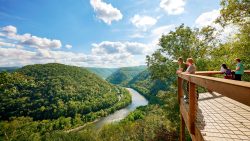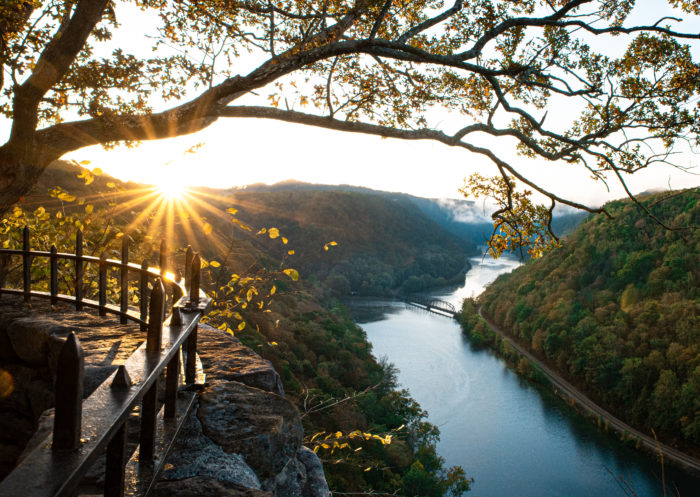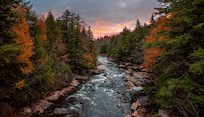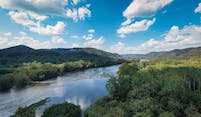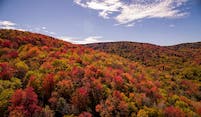Join in on this majestic creature’s comeback story
Bald eagles have been nesting in northern parts of the state since 1981, but it wasn’t until spring 2010 that naturalists spotted a nesting pair on the New River. Since then, surveyors have recorded dozens of the birds nesting along waterways in southern West Virginia.
You, too, can join in on counting and studying this majestic bird — no experience required! All you need is a few hours of free time and a passion for learning about wildlife. Every January and March, naturalists lead a team of volunteers in the Pipestem area to scan the skies and waterways for golden and bald eagles. Beginners are paired with experienced birders who help show them what to look and listen for.
Fun facts
They’re not all that hard to spot: picture a nest about 5 feet in diameter and 3 feet deep – big enough to hold a human! Nesting typically begins in late February and the eggs hatch about a month after they are laid. 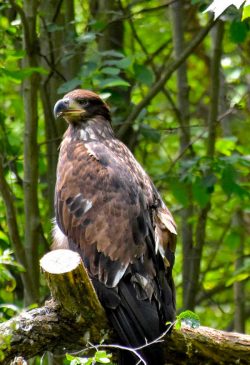 Eaglets leave the nest at age 10 to 13 weeks, but they won’t acquire the white head and tail feathers of their parents until they reach full maturity at age 4 or 5 years.
Eaglets leave the nest at age 10 to 13 weeks, but they won’t acquire the white head and tail feathers of their parents until they reach full maturity at age 4 or 5 years.
Females are typically larger than males and can have a wingspan of nearly 7 feet, a regal appearance indeed. But that distinctive cry of the bald eagle you hear in movies and TV shows? That voice most likely belonged to a red-tailed hawk. That’s because the bald eagle’s real voice — a squeaky cackle — doesn’t quite match its majestic appearance.
You’re most likely to find eagles along lakes and rivers, feasting on fish. They’re not picky eaters, though. They also feed on waterfowl, small mammals, reptiles and even roadkill.
Around the state
If you can’t make it to the survey events, there are plenty of other places to find bald eagles — like at the West Virginia State Wildlife Center, which houses a collection of native and introduced wildlife, or on the Potomac Eagle Scenic Railroad, which boasts a high success rate of eagle sightings along the South Branch of the Potomac River.
Learn more about bald eagles and other birds of prey at Three Rivers Avian Center, which is open for public tours the first Saturday of the month May through October. TRAC owners Ron and Wendy Perrone also bring their Wings of Wonder show on the road to many state parks, schools and festivals throughout the state.
You can even watch eagles from the comfort of your home via a live webcam set up at the National Conservation Training Center in Shepherdstown. EagleCam — a partnership between the U.S. Fish and Wildlife Service, Outdoor Channel, and the Friends of National Conservation – allows you to observe up close the comings and goings of bald eagles as their eggs hatch and they raise their babies.
This post was last updated on March 17, 2022

